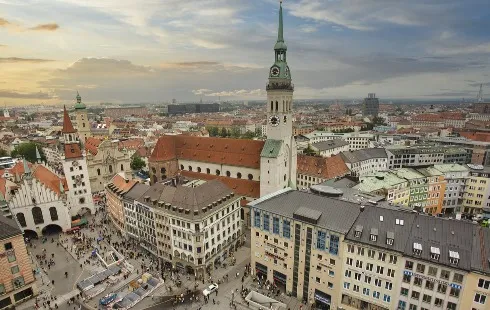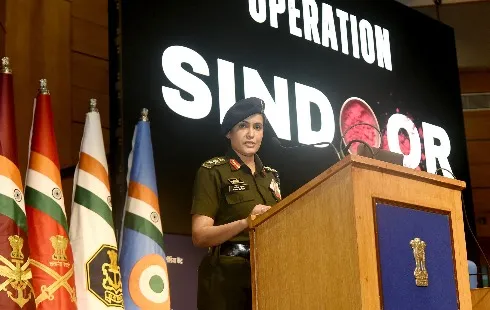
Gonadorelin Peptide: A Gateway to Understanding Endocrine Dynamics
Section: Science
 The Bavarian state government's ambition to establish an aerospace center on the outskirts of Taufkirchen has stirred concerns among Munich residents. In the truest sense of the word, this project in the district could potentially sacrifice a portion of the regional green belt, ultimately curtailing fresh air supply to around 100,000 inhabitants in the southern neighborhoods.
The Bavarian state government's ambition to establish an aerospace center on the outskirts of Taufkirchen has stirred concerns among Munich residents. In the truest sense of the word, this project in the district could potentially sacrifice a portion of the regional green belt, ultimately curtailing fresh air supply to around 100,000 inhabitants in the southern neighborhoods.
Critics argue that this could set a precedent that challenges the entire region's green belt concept. Even now, there are additional plans for industrial areas within the Hachinger Tal, through which one of Munich's fresh air corridors runs, such as the proposed Neubiberg Kapellenfeld project. While some celebrate Taufkirchen's commitment to science and research, others view it as a "breach" and an "ecological sin."
Those in favor of the project include district politicians and the Bavarian state government. On June 26, Minister President Markus Söder, Science Minister Markus Blume (both CSU), State Secretary for Economic Affairs Roland Weigert (Free Voters), District Administrator Christoph Göbel, Ottobrunn Mayor Thomas Loderer (both CSU), and Taufkirchen Mayor Ullrich Sander (independent) signed a declaration that the Technical University's Faculty of Aerospace should be further developed in Ottobrunn/Taufkirchen. The plan entails establishing a campus with 50 professorships and 4,000 students. The problem, however, is that the two municipalities do not have sufficient land for this endeavor.
Three days after this commitment to the location, representatives from the state government, district, and municipalities convened at the Regional Planning Association (RPV) to prepare for the campus expansion. The RPV, representing the city, eight surrounding districts, and 185 municipalities, is responsible for regional planning. In December, it rejected Taufkirchen's proposal to reduce the green belt. However, a door remained open: if the existing land was insufficient and a concrete concept for an innovation campus was available, the planning association would examine the project with an open mind.
Taufkirchen and Ottobrunn have since commissioned this planning concept, expected to be completed by the end of the year. Specifically, they aim to remove two areas from the protected zone: the "Parallelogram," a forested area north of B 471 between Einstein and Willy-Messerschmitt Streets, and the agriculturally used plots north of the Jochen-Schweizer-Arena between the highway and Ludwig-Bölkow-Allee. Taufkirchen's mayor, Sander, describes this as a "feasibility study" that will demonstrate the land requirement.
Sander explains, "It's not just about the university buildings themselves but also about attracting companies and startups from the aerospace industry and the planned business incubator." Additionally, such a campus requires infrastructure. "This includes student housing and, of course, a subway stop." According to Sander, the initial plan is to use designated building land and then areas outside the green belt. Only when no options are available there should they consider currently protected areas. The Ministry of Science announced that there are "initial positive signals" suggesting that the campus can be realized without encroaching on protected lands.
However, critics argue that it doesn't matter whether it's a university campus or a commercial operation blocking the fresh air corridor. They insist that for the aerospace center's prestige project, climate and ecological goals and findings should not be ignored. Thomas Kiesmüller, spokesperson for the "Frischluftzufuhr für München" (Fresh Air Supply for Munich) citizen initiative, writes in a letter to the RPV that any intervention would be an "irreversible climate and ecological sin," and the decision would be "politically irresponsible."
The Munich City Council's factions from the ÖDP and Munich List parties support the citizen initiative. They argue that it amounts to a "breakthrough" because it would enable all surrounding municipalities to build in the regional green belts, depriving people in the city of Munich of fresh air and exposing them to overheating. They are proposing that any expansions or reductions of green belts be clearly indicated on maps over time to prevent piecemeal reductions. They also call for freezing the lands to their current state and allowing only enlargements in the future.
The city's planning department refrains from making a statement, but it agrees with the RPV's proposal that no reduction of the regional green belt should take place without a concrete and comprehensible planning concept. Furthermore, Munich can only decide about its own lands, so it is essential to take proactive measures. In March, the City Council unanimously resolved to forego further construction west of Unterhachinger Straße and to monitor neighboring municipalities, especially Neubiberg and Unterhaching, in their plans to protect the Hachinger Tal fresh air corridor and preserve the regional green belt.

Section: Science

Section: Health

Section: Arts

Section: Health

Section: Science

Section: News

Section: News

Section: Health Insurance

Section: Health

Section: News
Health Insurance in Germany is compulsory and sometimes complicated, not to mention expensive. As an expat, you are required to navigate this landscape within weeks of arriving, so check our FAQ on PKV. For our guide on resources and access to agents who can give you a competitive quote, try our PKV Cost comparison tool.
Germany is famous for its medical expertise and extensive number of hospitals and clinics. See this comprehensive directory of hospitals and clinics across the country, complete with links to their websites, addresses, contact info, and specializations/services.
What do you get when you blend the tradition of American stand-up comedy with themes that are anything but funny? Pair that with a captivating performer and author like Claus von Wagner, and you're guaranteed a fantastic evening. Projekt Equilibrium is his latest program, which explores the quest...



No comments yet. Be the first to comment!